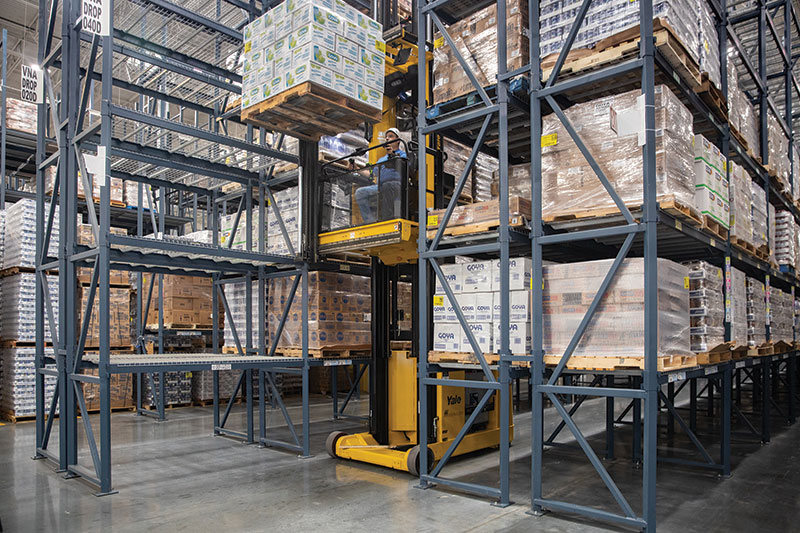In 2005, Goya Foodsbegan a 10-year strategic plan, as it invested $500 million to reach new customers and strengthen its brand wor...
In 2005, Goya Foodsbegan a 10-year strategic plan, as it invested $500 million to reach new customers and strengthen its brand worldwide.
To improve its brand, the company focused on optimizing its distribution network. It has encountered rising demand for its massive catalog of more than 2,700 stock keeping units (SKUs), yet the nature of these orders have proved to be challenging. Its customers expect fast, overnight turnaround—from order receipt to shipping—leading Goya to re-evaluate its approach to warehousing, including facility size, storage configuration, workflow and equipment.
![]()
To accommodate decades’ worth of growth, Goya built a 643,000-square-foot facility in Jersey City, N.J., which would serve as a model for the rest of its distribution network and consolidate two distribution facilities into one. The new facility offers significantly more capacity, due to greater square footage, along with custom racking that takes advantage of 42-foot ceilings—nearly double the height of previous facilities. The racking provides the company a true high-density configuration, as it enables pallet storage to grow from five pallets to as high as nine in certain areas.
The company employed a very narrow aisle (VNA)truck, which featured a tri-form mast and offered support at all lift heights—including a maximum height of 55 feet—and visibility through the sides and center.
However, the search for the proper lift truck solution had only just begun. Although Goya’s custom racking provided necessary high-density storage, it also posed various challenges to sit-down counterbalanced trucks and reach truck models.
First, the low clearance of the drive-in rackingdidn’t accommodate the overhead guard of a standard sit-down truck, preventing it from entering the six-pallet-deep racking to complete the putaway process. And, the reach truck outriggers regularly contacted the base of the racking, which prevented reach trucks from moving into optimal positions to remove or deposit loads. Since it would have been prohibitively expensive to modify the racking, the lift trucks would need to be customized instead, according to Goya’s unique needs.
Therefore, a Goya-spec lift truck (an electric counterbalanced model) was modified to remove the fender over its front wheels, add larger tires and use a custom overhead guard. As a result of the modifications, the guard design features a curvature and camber on the sides, which allows the truck to fit through the drive-in racks, while also maintaining necessary operator protection.
The reach trucks were also modified to address the challenge of outriggers hitting the base of the rack—an issue that prevented operators from moving close to target storage locations, while also threatening their abilities to reach into double-deep storage depths. The manufacturer began the modification process by extending the reach, adjusting cylinders and reach mechanisms, and then adding laser positioning, along with a camera system, to help operators position their loads (particularly at great heights) in a more precise manner.
By taking advantage of the entire cubic volume of the larger space and reducing touches from receiving to putaway, the facility can now move more cases—60,000 to 90,000 per night—more efficiently than ever before.







 粤公网安备 44010602003952号
粤公网安备 44010602003952号